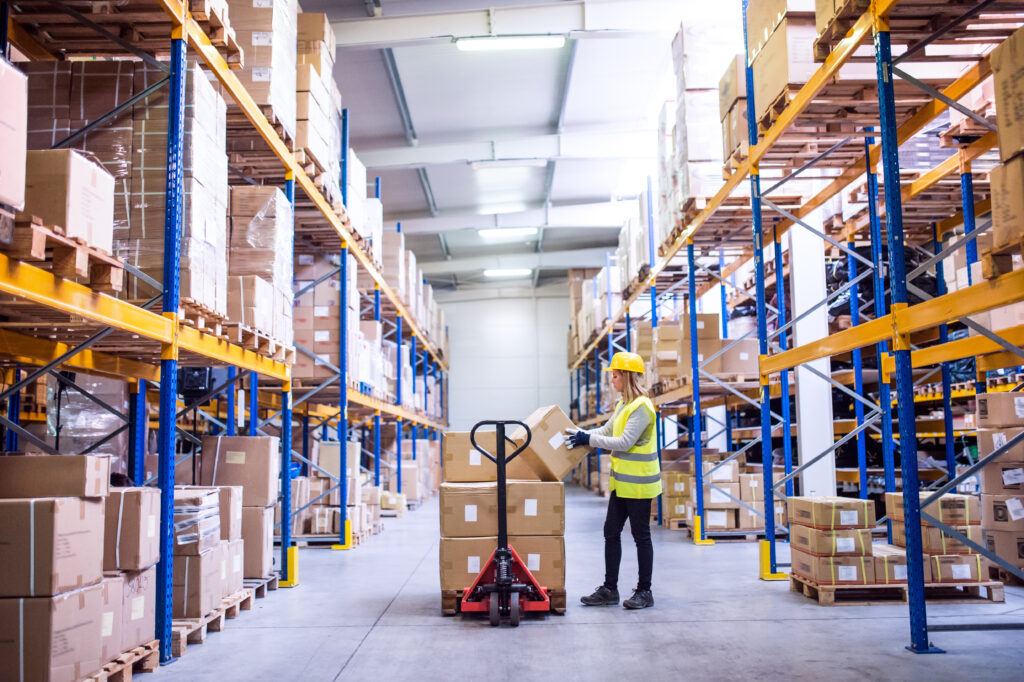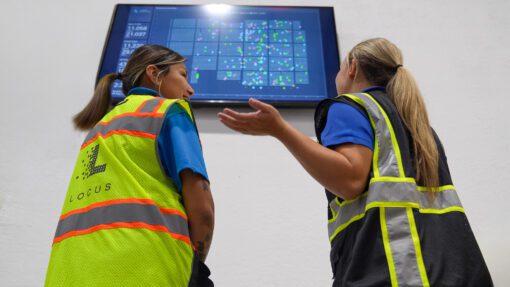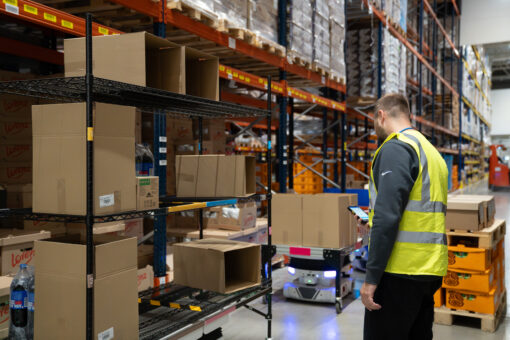WP: How to achieve 400 UPH with Locus Fast Pick
WP: How to achieve 400 UPH with Locus Fast Pick Download Now!

As you grow your warehouse and fulfillment business to keep up with increasing order volumes — and get those orders out on time — the need for scalable, efficient, and cost-effective warehouse solutions becomes more important. Spoiler alert: You can’t get there with your usual manual warehouse operations. Let’s look at the true costs and inefficiencies of manual warehouse operations and why transitioning to automated systems can significantly enhance your warehouse and bottom line.
5 Ways that Manual Processes Drive up Costs
Manual warehousing operations might seem cost-effective initially, but the long-term expenses often outweigh the apparent savings. Here are five key areas where manual operations can cause significant costs.
- Labor
Labor is the most significant expense in manual warehousing, with order picking alone accounting for over 55% of a warehouse’s operational costs. With the average wage increase reported at over 11% annually, the cost of maintaining a large manual workforce continues to escalate. This cost is heightened even more by the need to hire, train, and manage a substantial number of associates, which can be both time-consuming and costly.
- Inefficiencies and Errors
Manual processes are inherently slower and more prone to errors compared to automated systems. Picking errors, misplacements, and delays are common, leading to dissatisfied customers and additional costs for correcting mistakes. Think about what these inefficiencies can do to the overall productivity of your warehouse and that’s reason enough to make the switch to automation, even without the costs, which are many.
The average U.S. retail warehouse has an inventory accuracy rate of only 63%. This low accuracy rate can lead to frequent stockouts and overstock situations, resulting in poor customer experiences, lost sales, and monetary costs.
Many people might think that fixing an inaccurate order doesn’t cost too much, but they’d be wrong. The worldwide cost of fixing inaccurate orders is high — to the tune of $1.1 trillion for inaccurate orders, shrinkage, stockouts, and overstock. For example, correcting an error often involves additional shipping costs, handling returns, and restocking, which can quickly add up.
- Space Utilization
Manual warehouses often struggle with optimal space utilization. Traditional shelving and wide aisles to accommodate associates, forklifts, and heavy carts consume valuable floor space that could otherwise be used more efficiently.
What can you do to get more space? You could move to a new facility, but that involves the costs of moving and renting a new space. The average base rental rate for warehouse space in the U.S. according to Prologis (the global leader in logistics real estate) is approximately $0.85 per square foot per month. Additional operating expenses, such as maintenance and utilities, typically add around $0.25 per square foot per month. This brings the total average cost to about $1.10 per square foot per month. Therefore, renting a new 5,000 square foot warehouse would cost approximately $5,500 per month, or $66,000 annually. Instead, consider making better use of the space you already have.
- Safety
Warehouse environments are prone to accidents, with the transport and warehousing industry having one of the highest rates of workplace injuries. When you add in manual processes with associates transporting goods, the risk of slips, falls, and repetitive strain injuries increases significantly. The associated costs, including workers' compensation, insurance premiums, and productivity losses due to absenteeism, can be substantial.
In terms of direct costs specifically associated with warehouse accidents, each worker injury costs companies an average of $38,000, which encompasses medical bills and rehabilitation. However, indirect costs, including lost productivity, lower worker morale, and training for replacement workers, can drive the total cost per incident up to approximately $150,000.
- Scalability
Manual systems lack the scalability needed to handle increasing volumes and complexity in operations. As warehouses and fulfillment centers grow, the need to hire more staff and expand physical infrastructure can lead to disproportionate increases in costs and logistical challenges.
Hiring and training temporary warehouse associates to handle these volumes during peak season can be quite costly. The Wall Street Journal highlighted that the average hourly wage for warehouse associates in the U.S. was $23.71 as of April 2023, reflecting an 8% increase compared to May 2020. This rise in wages contributes to the higher costs of hiring seasonal labor. Automated systems, on the other hand, can easily scale to meet higher demands without a corresponding rise in labor and space requirements.
Warehouse Automation Advantages over Manual Processes
Making the move to automated warehouse operations offers a number of solid benefits, including the ones below, that address the limitations and costs of manual systems.
- Efficiency and Productivity
Automated systems like autonomous mobile robots (AMRs) work steadily alongside human associates to significantly speed up picking, packing, and sorting in your warehouse ,which leads to higher throughput and more efficient use of resources. For instance, automated picking systems can increase order picking accuracy and speed, reducing the overall time taken to fulfill orders.
- Space Utilization
Automation allows for more efficient use of vertical space like mezzanines and pick towers, reducing the need for expansive floor areas. Automated systems can operate in narrower aisles and higher shelving, maximizing your warehouse pick density, and freeing up space for other revenue-generating activities.
- Labor and Training
Automated systems work with your current associates, but they reduce the need to bring in more associates during peak seasons, lowering wages, benefits, and training expenses. At the same time, AMRs take on the transport tasks, while associates can take on more strategic, brain-utilizing tasks that add greater value.
- Safety
Automated warehouses are designed to minimize human interaction with heavy machinery and high-risk tasks to significantly reduce the incidence of workplace injuries and associated costs. At the same time, the number of employee injury and strain incidents is significantly lessened with the bots transporting items instead of the associates pushing heavy carts. Automated systems often include advanced safety features like emergency stop buttons and LiDAR to ensure a safer working environment.
- Inventory Management
Automated systems can provide real-time data and analytics, enabling better inventory tracking and management. This reduces errors and ensures that stock levels are optimized to meet demand without overstocking or stockouts. This improved inventory accuracy also enhances customer satisfaction and reduces the costs associated with inventory mismanagement.
Automate Your Warehouse
The decision to automate warehouse operations is a strategic move that can drive significant cost savings, improve efficiency, and enhance overall productivity. The AMRs at Locus Robotics are designed to integrate seamlessly into your existing warehouse operations.
They are scalable, flexible, and easy to implement, making them the ideal solution for when you’re looking to transition from your manual systems to automated. By moving to AMRs, you can unlock new levels of efficiency, safety, and cost-effectiveness, ensuring your warehouse operations remain competitive.
Want to learn more? Let’s talk!




